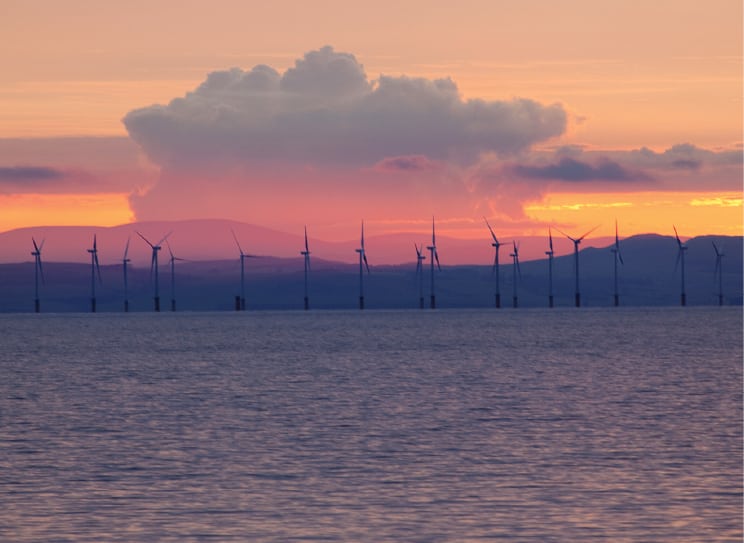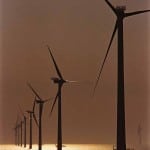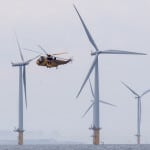After more than a decade of debate, in April, U.S. Interior Secretary Ken Salazar approved Cape Wind, a proposed 130-turbine offshore wind farm for Nantucket Sound in Massachusetts. It would be the first wind facility in U.S. waters. Despite remaining hurdles, the approval marks a shift in political winds for the nation’s fledgling industry, and it could spur further development of projects proposed for relatively shallow waters along the East Coast and in the Great Lakes.
The decision coincides with a surge of activity in the offshore wind sector around the world. Soon after Salazar’s announcement, French Environment Minister Jean-Louis Borloo said he would reveal 10 offshore sites in that country for the construction of as much as 3,000 MW of wind power projects. France has been straggling behind its European counterparts in the installation of wind power and had 4,492 MW of installed capacity at the end of last year. This compares with 25,777 MW in Germany, the leader in the European Union, according to the European Wind Energy Association (EWEA). France intends to increase its offshore wind capacity to more than 6,000 MW within 10 years, Borloo indicated.
Meanwhile, countries like the UK, Denmark, and China are also forging ahead. In April, Germany opened its first offshore wind venture, the Alpha Ventus, a 12-turbine pilot installation in the North Sea. And the UK recemented its position as the global offshore wind energy leader, saying it had attained 1 GW of installed offshore capacity. That announcement came as DONG Energy—a company 73% owned by the Danish government—completed its Gunfleet Sands offshore wind farm and Germany’s E.ON commissioned its Robin Rigg development (Figure 1).
 |
| 1. Blown out of the water. In April, E.ON’s 180-MW Robin Rigg offshore wind farm (shown here) in the UK’s Solway Firth, Cumbria, and DONG Energy’s 172-MW, 48-turbine Gunfleet Sands project in the Thames Estuary off of England’s East Coast flicked on their turbines. The two projects bring the UK’s installed offshore wind capacity to a stunning 1 GW—cementing the UK’s place as the world leader. And there’s much more to come: Some 40 GW of new offshore capacity are in various stages of development in that country. Courtesy: E.ON UK |
Those projects now bring the UK’s total working offshore wind farms to 11—and its total installed wind turbines to a stunning 336. But even this pales in comparison to projects in the pipeline: Trade association RenewableUK asserts that the country’s expanding sector has 40 GW of capacity now at various stages of development. Around 30 GW of capacity are expected to be delivered through recently awarded Round 3 projects, the first of which are expected to come online during the second half of this decade.
EWEA recently attributed the rapid development of new wind farms in the UK to its planning system, saying that the UK system fares much better than others around the world. On average, it takes 42 months to obtain approval for constructing a wind farm in the EU compared to the average 27-month wait in the UK. But Finland reportedly has an even shorter wait of only eight months, followed by Austria (10 months), Italy (18 months), and Romania (15 months). On the other hand, Portugal—a country with hefty offshore wind resources—requires a 58-month wait, while Spain and Greece warrant a 50-month wait. The organization also applauded Denmark for instituting a system that requires developers to contact just five different agencies—a cinch compared to countries like Greece, where developers must contact almost 41 different establishments.
Salazar took note of this in April, saying that the decade-long review and approval process for the Cape Wind project was too long—and indicating that future offshore wind projects would follow a “more rational and orderly process.” Indeed, this is an approach the Obama administration must take if it is to near its goal of producing 20% of the nation’s power from wind energy by 2030—18% of which could be, according to the National Renewable Energy Laboratory, from offshore installations. How the administration will implement its policy remains to be seen: Many of Cape Wind’s challenges swirl around maintaining the historic and aesthetic qualities of the area. Salazar attempted to address these concerns by imposing conditions on the project’s approval. These require that developers conduct additional archaeological and marine assessments and that they take specific steps to make turbines less visible from the shore by adjusting coloring and lighting.










